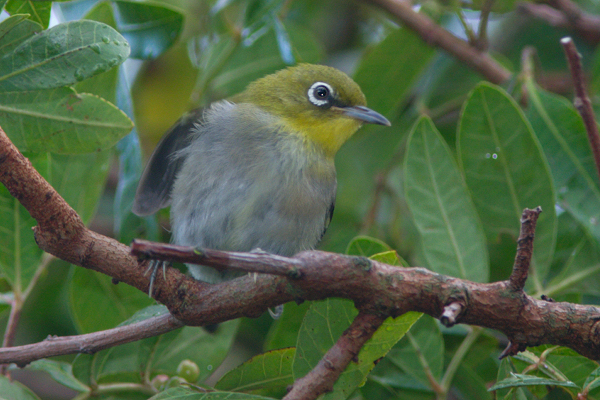
Location: O'ahu, Hawaii
Date: 2005-07-12
Lens: Canon 300mm IS F4 + 1.4x II Converter

 Japanese White-Eye
Zosterope japonicus
Japanese White-Eye
Zosterope japonicus
 Description
DescriptionThe Japanese White-Eye is an extremely energetic bird that is always on the move. They will hang upside down, and in just about every other position, while foraging for nectar or insects. The white-eyes often travel in flocks of 5 to 20 or more. Also known its Japanese name, Mejiro.
Olive-green head, neck, and back. Wings and uppertail feathers are blackish-brown outlined with green. Yellowish throat. Grayish breast and flanks with a buffy wash. White belly. Color of underparts can be variable. Black bill. Black legs and feet. White eye ring. Juvenile similar to adult, but lacks eye ring. Sexes similar, but female is duller. 4 to 4.5 inches in length.
Trees and shrubs in towns, parks, forests, and rainforests from sea level to tree line. Native to Japan. Introduced to O'ahu in 1929 to remove insects. Most abundant bird in Hawaii and is found on all islands.
 Nesting
Nesting3-4 whitish eggs. The eggs have an 11 day incubation period. Fledging occurs in 9-10 days. The nest is a neatly woven open cup made from grass, plant material, string, tin foil, leaves, mosses, and cobwebs or spider cocoons. The nest is built in the fork of a tree branch at any height. The bird is extremely territorial during breeding and is rarely found nesting in the same tree as another bird. The bird has a long breeding season from February to December, with the peak in July and August.